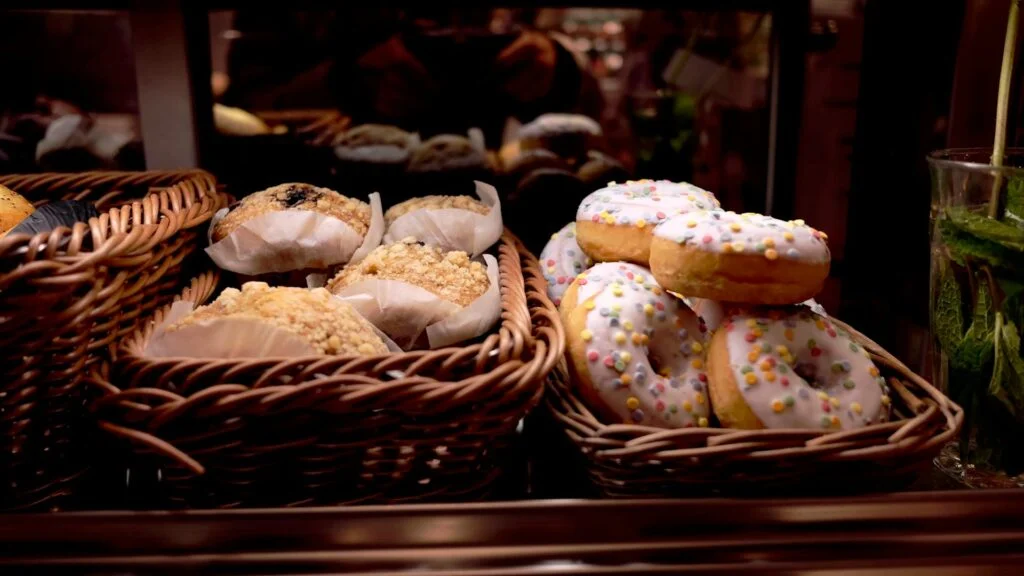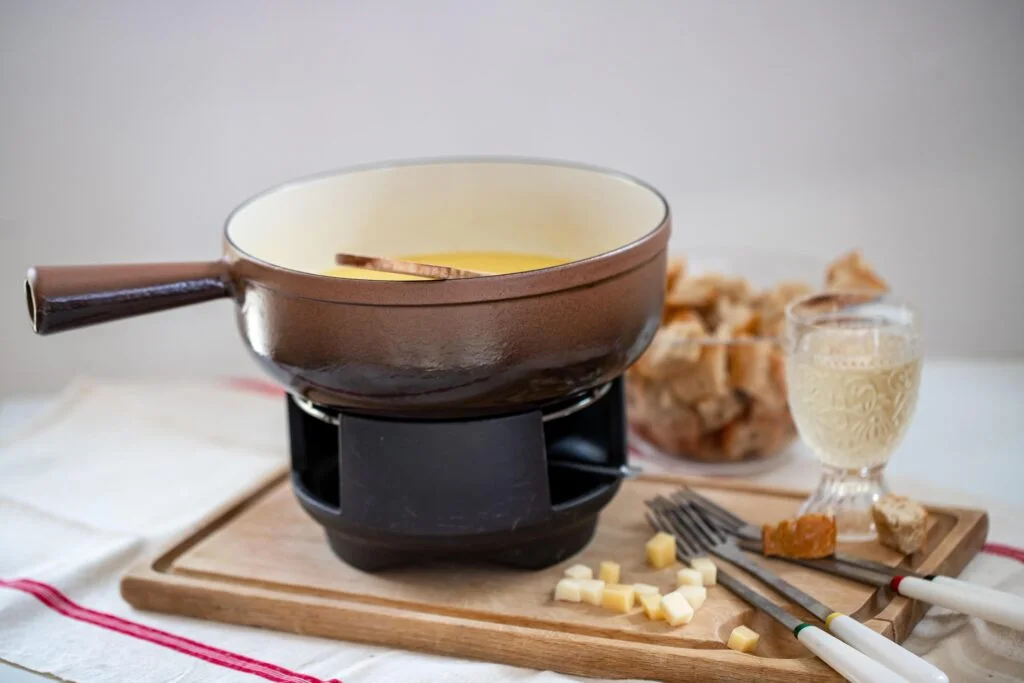From hearty dishes to sweet treats, Swiss cuisine is diverse and delicious. Each region has its specialties, influenced by neighboring countries like France, Germany, and Italy. Whether you’re planning a trip or just curious, knowing about Switzerland’s popular foods can be a delightful journey.
Swiss food is not only about cheese and chocolate, though they are legendary. There’s so much more that tells the story of Swiss traditions and flavors. Join us as we explore the top 10 most popular foods in Switzerland. Discover what makes each dish special and why locals and visitors love them. Get ready to savor the taste of Switzerland!
Swiss Cheese Varieties
Switzerland is known for its breathtaking landscapes and rich culinary heritage. At the heart of Swiss gastronomy lies its cheese. Cheese isn’t just food here; it’s a cultural emblem. From nutty flavors to creamy textures, Swiss cheese varieties are celebrated worldwide. Among the most popular are Emmental and Gruyère. These cheeses are renowned for their distinct characteristics and delightful taste profiles.
Emmental
Emmental cheese is famous for its large holes and mild flavor. Originating from the Emmental Valley, this cheese is a symbol of Swiss cheesemaking excellence. Here are some notable features:
- Origin: Emmental Valley, Switzerland
- Texture: Medium-hard with large holes
- Taste: Mild, nutty, and slightly fruity
Emmental is crafted using traditional methods. Cheese makers use unpasteurized cow’s milk, giving it a distinct taste. Its holes form due to gas bubbles produced during fermentation. This cheese is perfect for melting. It pairs well with fondue and gratins.
Here’s a quick overview of its nutritional profile:
| Nutrient | Value (per 100g) |
|---|---|
| Calories | 380 |
| Protein | 28g |
| Fat | 29g |
Emmental cheese is versatile. It’s used in sandwiches, salads, and baked dishes. Enjoy it with fruits or nuts for a balanced snack.
Gruyère
Gruyère cheese is another Swiss delight. Known for its rich and creamy texture, it’s a favorite among cheese enthusiasts. Let’s explore its features:
- Origin: Gruyères, Switzerland
- Texture: Hard and creamy
- Taste: Rich, sweet, and slightly salty
Gruyère is aged for a few months, enhancing its flavor. Cheese makers use whole cow’s milk. Its unique taste comes from the aging process. Gruyère is perfect for melting. It’s often used in traditional Swiss dishes like fondue and croque monsieur.
Here’s a glimpse of its nutritional values:
| Nutrient | Value (per 100g) |
|---|---|
| Calories | 413 |
| Protein | 30g |
| Fat | 33g |
Gruyère cheese is a kitchen staple. It adds depth to dishes like quiches and omelets. Pair it with wine for an exquisite experience.
Chocolate Delights

Switzerland is known for its breathtaking landscapes, precision engineering, and, of course, its delectable cuisine. Among the top 10 most popular foods in Switzerland, chocolate delights stand out as a national treasure. Swiss chocolate is celebrated worldwide for its exceptional quality and rich flavors. Let’s explore two main types of Swiss chocolate that have captured the hearts of chocolate lovers everywhere.
Milk Chocolate
Milk chocolate is one of the most beloved varieties of Swiss chocolate. It is known for its creamy texture and rich, sweet taste. Swiss milk chocolate is crafted using high-quality milk, sugar, and cocoa, resulting in a smooth and velvety product. Here are some characteristics that make Swiss milk chocolate so special:
- Creaminess: Swiss milk chocolate is incredibly creamy, thanks to the high-quality milk used in its production.
- Sweetness: The addition of sugar gives it a sweet flavor that is pleasing to many palates.
- Texture: Its smooth texture melts in your mouth, providing a luxurious eating experience.
The history of Swiss milk chocolate dates back to the 19th century when Daniel Peter invented it by combining milk with chocolate. This innovation quickly became popular and set the standard for milk chocolate production worldwide.
| Feature | Description |
|---|---|
| Creaminess | High due to quality milk |
| Sweetness | Pleasantly sweet |
| Texture | Velvety and smooth |
Swiss milk chocolate is often enjoyed on its own, but it also serves as a key ingredient in many desserts and confections. Whether you savor it in a bar or as part of a chocolate fondue, Swiss milk chocolate is sure to delight your taste buds.
Dark Chocolate
Dark chocolate is another popular variety that offers a more intense flavor profile. It typically contains a higher percentage of cocoa, which gives it a slightly bitter taste compared to milk chocolate. Here are some notable features of Swiss dark chocolate:
- Rich Flavor: With a higher cocoa content, dark chocolate has a deep and complex flavor.
- Bitterness: The slight bitterness balances the sweetness, making it appealing to those who prefer less sugary treats.
- Health Benefits: Dark chocolate is rich in antioxidants, which can be beneficial for health.
Swiss dark chocolate is perfect for those who enjoy a more intense chocolate experience. It is often used in gourmet recipes and high-quality chocolate products. The rich flavor and health benefits make it a favorite among chocolate aficionados.
| Feature | Description |
|---|---|
| Rich Flavor | Deep and complex |
| Bitterness | Moderate, balances sweetness |
| Health Benefits | High in antioxidants |
In Switzerland, dark chocolate is often enjoyed with a glass of red wine or as part of elaborate desserts. Its sophisticated taste and numerous health benefits have earned it a special place in Swiss culinary tradition.
Rösti: A Classic Dish
Switzerland is known for its stunning landscapes and delicious cuisine. One of the top 10 most popular foods in Switzerland is Rösti. This classic dish is a beloved staple, enjoyed by locals and tourists alike. Rösti is a simple yet flavorful dish made primarily from potatoes. Its crispy texture and rich taste make it a must-try when visiting Switzerland.
Preparation Methods
Rösti can be prepared in several ways, but the basic method remains consistent. The dish starts with grated potatoes, which can be either raw or parboiled. Here are the common preparation methods:
- Raw Potatoes: Grate raw potatoes and squeeze out excess moisture. This method gives a crispier Rösti.
- Parboiled Potatoes: Boil the potatoes until they are half-cooked. Let them cool, then grate. This method results in a softer interior.
Once grated, the potatoes are mixed with salt. Some recipes also add a bit of flour or an egg to bind the mixture. The next step involves frying:
- Pan-frying: Heat butter or oil in a frying pan. Add the potato mixture and press it down to form a flat cake. Cook until golden brown on both sides.
- Baking: Spread the potato mixture on a baking sheet and bake until crispy.
Rösti is often cooked in a cast-iron skillet, which helps achieve a uniform, crispy crust. The dish can be served plain or with toppings like cheese, onions, or bacon.
Regional Variations
Rösti has many regional variations throughout Switzerland. Each region adds its own twist to the classic recipe. Here are a few notable examples:
- Bernese Rösti: This version includes bacon and onions, adding a rich, savory flavor.
- Zürich Rösti: Often served with Zürcher Geschnetzeltes, a creamy veal dish, making it a hearty meal.
- Lucerne Rösti: This variation is topped with melted cheese, creating a deliciously gooey finish.
The table below summarizes the key differences:
| Region | Special Ingredients |
|---|---|
| Bern | Bacon, Onions |
| Zürich | Served with Zürcher Geschnetzeltes |
| Lucerne | Melted Cheese |
Each region’s variation reflects local tastes and traditions. Whether you prefer a simple Rösti or one with extra ingredients, this dish offers something for everyone. Trying different versions is a great way to experience Swiss culture through its cuisine.
Fondue Fun
Switzerland is famous for its stunning landscapes, rich history, and delicious cuisine. One of the most beloved Swiss dishes is fondue. This delightful meal involves dipping food into a pot of melted cheese or hot oil. Let’s dive into the world of fondue fun and explore two popular types: cheese fondue and meat fondue.
Cheese Fondue
Cheese fondue is a classic Swiss dish that has won hearts worldwide. This dish involves melting a mix of cheeses in a pot and dipping bread pieces into the gooey goodness. Traditional cheese fondue uses a blend of Gruyère and Emmental cheese, mixed with white wine and garlic.
Here is a simple recipe to try:
- 1 clove of garlic
- 1 cup of dry white wine
- 200g Gruyère cheese
- 200g Emmental cheese
- 1 tablespoon lemon juice
- 1 tablespoon cornstarch
- Freshly ground black pepper
- Nutmeg
To prepare:
- Rub the pot with the garlic clove.
- Heat the Lovely wine and lemon juice in the pot.
- Gradually add the cheese, stirring until melted.
- Mix cornstarch with a bit of wine and add to the pot to thicken.
- Season with pepper and nutmeg.
Serve with cubed bread, pickles, and boiled potatoes for dipping. Make sure to keep stirring the cheese to avoid it burning at the bottom.
Meat Fondue
Meat fondue, or fondue Bourguignonne, offers a different kind of enjoyment. Instead of cheese, you use hot oil or broth to cook various meats. This makes for a fun and interactive dining experience.
Commonly used meats include:
- Beef tenderloin
- Chicken breast
- Pork loin
- Shrimp
Here is a simple preparation guide:
- Cut the meats into bite-sized pieces.
- Heat the oil or broth in the fondue pot until hot.
- Provide dipping sauces such as garlic butter, mustard sauce, or barbecue sauce.
- Guests can spear the meat with fondue forks and cook in the hot oil or broth.
Table of Popular Dipping Sauces:
| Sauce | Ingredients |
|---|---|
| Garlic Butter | Butter, garlic, parsley |
| Mustard Sauce | Mustard, mayonnaise, lemon juice |
| Barbecue Sauce | Tomato sauce, vinegar, brown sugar |
Meat fondue is perfect for gatherings, allowing everyone to personalize their meal. Provide a variety of meats and sauces to keep everyone happy and engaged.
Zopf Bread
Switzerland is known for its stunning landscapes, rich culture, and of course, its delicious food. Among the top 10 most popular foods in Switzerland is Zopf Bread. This traditional Swiss bread is characterized by its unique braided shape and its soft, buttery texture. Zopf Bread holds a special place on Swiss tables, especially during weekends and holidays.
Baking Process
The baking process of Zopf Bread is both an art and a tradition in Swiss households. This bread is typically made with a few simple ingredients: flour, milk, butter, yeast, and eggs. The magic lies in the technique and the care taken during each step. Here is a step-by-step guide:
- Mixing the Ingredients: Combine flour, yeast, and a pinch of salt in a large bowl. Gradually add milk and melted butter, mixing until a dough forms.
- Kneading the Dough: Knead the dough on a floured surface for about 10 minutes. The dough should be smooth and elastic.
- First Rise: Place the dough in a bowl, cover it with a damp cloth, and let it rise for about an hour or until it doubles in size.
- Braiding the Dough: Divide the dough into three equal parts.
- Second Rise: Place the braided dough on a baking sheet, cover it, and let it rise for another 30 minutes.
- Baking: Preheat the oven to 375°F (190°C). Brush the braid with an egg wash for a glossy finish.
Serving Suggestions
Zopf Bread is incredibly versatile and can be enjoyed in many ways. Here are some serving suggestions to make the most of this delicious bread:
- Breakfast: Serve Zopf Bread with butter and jam for a traditional Swiss breakfast. It’s also perfect with honey or Nutella.
- Sandwiches: Use slices of Zopf Bread to make sandwiches. Its soft texture pairs well with cold cuts, cheese, and fresh vegetables.
- French Toast: Turn leftover Zopf Bread into French toast. Dip the slices in a mixture of eggs, milk, and cinnamon before frying them to golden perfection.
- Accompaniment: Serve Zopf Bread alongside soups and stews. Its mild flavor complements savory dishes well.
For a special touch, sprinkle some sesame or poppy seeds on top before baking. This adds a delightful crunch to each bite. No matter how you choose to serve it, Zopf Bread is sure to be a hit at any meal.
Sausages And Wursts
Switzerland is known for its breathtaking landscapes and rich cultural heritage. Among the many culinary delights, the country offers a variety of sausages and wursts. These savory treats are a staple in Swiss cuisine, enjoyed by locals and visitors alike. Let’s dive into two of the most popular types of Swiss sausages: Bratwurst and Salsiz.
Bratwurst is one of the most beloved sausages in Switzerland. This sausage is made from a mix of pork and veal, seasoned with a blend of spices that give it a distinctive flavor. Bratwurst is usually grilled or pan-fried, making it crispy on the outside and juicy on the inside.
Here are some key features of Bratwurst:
- Ingredients: Pork, veal, spices
- Cooking method: Grilling or pan-frying
- Serving suggestions: Served with mustard, bread, or potato salad
Bratwurst is often enjoyed at outdoor festivals and markets. It is a versatile sausage that pairs well with various side dishes. Many people love to eat it with mustard and a slice of fresh bread. Some popular side dishes include:
| Side Dish | Description |
|---|---|
| Potato Salad | A cold salad made from boiled potatoes, onions, and a tangy dressing |
| Rösti | A Swiss potato dish, similar to hash browns, crispy and flavorful |
Bratwurst is not just a food; it’s an experience. Eating Bratwurst at a local market, surrounded by the sounds and smells of Swiss culture, is a memory you won’t forget.
Salsiz
Salsiz is another popular sausage in Switzerland, particularly in the mountainous regions. This dried sausage is made from pork, beef, and a variety of spices. Salsiz has a unique texture and a rich, robust flavor that sets it apart from other sausages.
Key characteristics of Salsiz:
- Ingredients: Pork, beef, spices
- Preparation: Dried and cured
- Flavor: Rich and robust
Salsiz is often enjoyed as a snack or appetizer. Here are some common ways to enjoy Salsiz:
- Slice thinly and serve with cheese
- Pair with a glass of red wine
- Include in a charcuterie board
The drying and curing process gives Salsiz its unique flavor and long shelf life. This makes it an ideal snack for hikers and outdoor enthusiasts. It is also a popular item at Swiss markets and festivals.
Both Bratwurst and Salsiz highlight the rich culinary traditions of Switzerland. Each sausage offers a unique taste experience, deeply rooted in Swiss culture.
Bircher Müesli
Switzerland is known for its breathtaking landscapes and rich culinary traditions. Among the top 10 most popular foods in Switzerland, Bircher Müesli stands out. This delicious and nutritious dish has become a staple breakfast not only in Switzerland but also around the world. Developed by Swiss physician Maximilian Bircher-Brenner in the early 1900s, Bircher Müesli was initially created as a healthy meal for his patients. Today, it is enjoyed by many for its delightful taste and health benefits.
Ingredients
Bircher Müesli is a simple yet flavorful combination of ingredients. The traditional recipe includes:
- Rolled oats: Often soaked overnight for a softer texture.
- Fresh fruits: Apples are the classic choice, but berries, bananas, and pears are also popular.
- Nuts: Commonly used nuts include almonds, hazelnuts, and walnuts.
- Seeds: Such as sunflower seeds or chia seeds for added nutrition.
- Yogurt: Adds creaminess and a tangy flavor.
- Milk or fruit juice: Used to soak the oats.
- Honey: For a touch of natural sweetness.
To prepare Bircher Müesli, start by soaking the rolled oats in milk or fruit juice overnight. In the morning, mix in yogurt and grated fresh fruits. Top with a handful of nuts and seeds, and drizzle with honey. This versatile dish can be customized with various fruits and toppings according to personal preferences.
Health Benefits
Bircher Müesli is not only delicious but also packed with numerous health benefits:
- Rich in fiber: The rolled oats and fresh fruits provide a good amount of dietary fiber, aiding in digestion and maintaining a healthy gut.
- High in vitamins and minerals: Fruits like apples and berries are rich in vitamins A, C, and E, as well as essential minerals like potassium and magnesium.
- Protein-packed: The nuts, seeds, and yogurt offer a good source of protein, which is essential for muscle repair and growth.
- Antioxidant properties: Many of the ingredients in Bircher Müesli, such as berries and nuts, contain antioxidants that help combat free radicals and reduce inflammation.
- Low in added sugars: Unlike many commercial breakfast cereals, Bircher Müesli relies on the natural sweetness of fruits and a small amount of honey.
Eating Bircher Müesli regularly can help maintain a balanced diet. It provides sustained energy throughout the day due to its combination of complex carbohydrates, healthy fats, and proteins. This makes it an excellent choice for breakfast or even as a healthy snack.
Swiss Pastries

Switzerland is known for its stunning landscapes, rich culture, and delicious food. Among the top 10 most popular foods in Switzerland, Swiss pastries stand out as a delightful treat for locals and tourists alike. These pastries are not only delicious but also a reflection of Swiss culinary tradition. Let’s explore two of the most cherished Swiss pastries: Nusstorte and Biberli.
Nusstorte
Nusstorte, also known as Engadine nut tart, is a beloved Swiss pastry originating from the Engadine region. It’s a rich, sweet dessert that combines a buttery pastry crust with a filling of caramelized nuts, usually walnuts. The pastry is renowned for its hearty, nutty flavor and is often enjoyed with a cup of coffee or tea.
Here are some key features of Nusstorte:
- Ingredients: Flour, butter, sugar, cream, walnuts.
- Flavor: Sweet, nutty, and slightly caramelized.
- Texture: Crunchy crust with a gooey nut filling.
- Occasions: Popular during holidays and special occasions.
To make Nusstorte, the crust is prepared first by mixing flour, butter, and sugar. The filling is made by caramelizing sugar and cream, then adding chopped walnuts. The mixture is poured into the crust and baked until golden brown.
Here is a simple table highlighting the main components:
| Component | Description |
|---|---|
| Crust | Made from flour, butter, and sugar. |
| Filling | Caramelized sugar and cream with chopped walnuts. |
Nusstorte’s combination of textures and flavors makes it a must-try when visiting Switzerland. Its simplicity and richness embody the essence of Swiss pastry tradition.
Biberli
Biberli is another popular Swiss pastry with a unique taste and texture. It’s a small, gingerbread-like cake filled with marzipan. Originating from the town of Appenzell, Biberli is a favorite during festive seasons, particularly Christmas.
Key characteristics of Biberli include:
- Ingredients: Flour, honey, spices, almonds, sugar.
- Flavor: Spicy gingerbread with a sweet almond filling.
- Texture: Soft cake with a chewy marzipan center.
- Occasions: Often enjoyed during Christmas and New Year.
To prepare Biberli, the dough is made by combining flour, honey, and various spices like cinnamon and cloves. The dough is rolled out and cut into small rectangles. A piece of marzipan is placed in the center of each rectangle, and the dough is folded over to encase the filling. The Biberli are then baked until golden brown.
Here is a simple table highlighting the main components:
| Component | Description |
|---|---|
| Dough | Made from flour, honey, and spices. |
| Filling | Marzipan made from almonds and sugar. |
Biberli’s spicy and sweet combination makes it a favorite among Swiss pastries. Its festive nature and unique taste are sure to delight anyone who tries it.
Swiss Wine Pairings
Switzerland, known for its stunning landscapes and rich culture, boasts a diverse culinary heritage. The top 10 most popular foods offer a delicious journey through Swiss flavors. To enhance these culinary delights, Swiss wine pairings are essential. The perfect wine can elevate the taste of Swiss dishes, creating an unforgettable dining experience. Let’s delve into the best regions for Swiss wines and discover the popular varieties that complement these traditional foods.
Best Regions
Switzerland has several wine regions, each offering unique flavors and characteristics. These regions contribute to the rich diversity of Swiss wines, perfectly suited for pairing with local dishes.
Here are some of the best regions:
- Valais: This region is the largest wine-producing area in Switzerland. It is famous for its dry, sunny climate, which is ideal for growing grapes. The wines from Valais are full-bodied and aromatic, making them perfect for pairing with hearty Swiss foods.
- Vaud: Located near Lake Geneva, Vaud is known for its terraced vineyards. The Chasselas grape is the star here, producing light and crisp wines. These wines pair well with Swiss cheese dishes like fondue and raclette.
- Geneva: Geneva’s wine region is small but mighty. The wines here are often organic and biodynamic, reflecting the region’s commitment to sustainability. Geneva wines are versatile and can complement various Swiss dishes.
- Ticino: This Italian-speaking region specializes in Merlot. Ticino’s wines are robust and complex, ideal for pairing with rich, meaty dishes.
Popular Varieties
Switzerland offers a range of wine varieties, each with unique flavors and aromas. These varieties are perfect for pairing with the top Swiss foods.
Here are some popular varieties:
- Chasselas: A light, crisp white wine that is slightly fruity. It is the ideal companion for cheese-based dishes like fondue and raclette.
- Pinot Noir: This red wine is elegant and aromatic. It pairs well with a variety of Swiss foods, including sausages, cured meats, and alpine dishes.
- Merlot: Primarily grown in Ticino, Merlot wines are rich and full-bodied. They complement hearty dishes such as Zurich-style veal and rösti.
- Petite Arvine: A white wine from Valais, Petite Arvine is known for its floral and citrus notes. It pairs beautifully with fish dishes and light appetizers.
- Humagne Rouge: Another gem from Valais, this red wine is spicy and robust. It is perfect for pairing with game meats and strong cheeses.
By exploring these regions and varieties, you can find the perfect Swiss wine to enhance your culinary experience. Whether enjoying a traditional fondue or savoring a piece of Swiss chocolate, there’s a Swiss wine waiting to make your meal even more delightful.
Culinary Festivals
Switzerland is a food lover’s paradise, with its diverse culinary traditions and rich flavors. The country hosts numerous culinary festivals where you can savor the best local dishes. These festivals celebrate the top 10 most popular foods in Switzerland and offer an unforgettable experience for food enthusiasts.
Key Events
Switzerland hosts several key culinary events that highlight its rich food culture. These festivals attract food lovers from around the world, eager to taste traditional Swiss cuisine and enjoy a unique cultural experience.
Fête de la Fondue: Held in Fribourg, this festival celebrates the iconic Swiss cheese fondue. Visitors can taste different variations of this beloved dish, made with local cheeses and traditional recipes.
Chästeilet: This cheese-sharing festival in Justistal features local farmers dividing their summer cheese production. Visitors can sample and purchase a variety of Swiss cheeses, including the famous Emmental and Gruyère.
Basler Herbstmesse: Basel’s autumn fair is one of the oldest in Switzerland. It offers a wide range of traditional Swiss foods, from sausages and pretzels to sweet treats like Basler Läckerli.
Alpabzug: In various alpine regions, this event marks the descent of cattle from mountain pastures. The festival includes local food stalls offering hearty dishes like rösti, raclette, and alpine sausages.
Geneva International Food Festival: This event showcases the culinary diversity of Geneva, with food stalls representing cuisines from around the world. Swiss specialties such as chocolate, cheese, and wines are also prominently featured.
Local Specialties
The culinary festivals in Switzerland are an excellent opportunity to try local specialties. These dishes are a testament to the country’s rich gastronomic heritage and use the finest local ingredients.
Fondue: Made with melted cheese and served with bread, fondue is a Swiss classic. At festivals, you can try different variations, including ones made with wine, garlic, and kirsch.
Raclette: This dish features melted cheese scraped over boiled potatoes, pickles, and onions. It is a must-try at any Swiss food festival.
Rösti: A traditional Swiss potato dish, rösti is crispy and golden. It is often served with fried eggs, bacon, or cheese.
Zürcher Geschnetzeltes: This creamy veal dish is a specialty of Zurich. It is usually served with rösti and makes for a hearty meal.
Swiss Chocolate: Festivals often feature chocolate-making demonstrations and tastings, allowing visitors to indulge in this sweet delight.
Bircher Muesli: Created by a Swiss doctor, this healthy breakfast dish combines oats, yogurt, fruits, and nuts. It is a popular choice at morning food stalls.
Sampling these local specialties at Swiss culinary festivals offers a deeper understanding of the country’s food culture. Each dish tells a story, reflecting the traditions and ingredients unique to its region.
Frequently Asked Questions
What Do Swiss People Eat For Lunch?
Swiss people often eat a light lunch. Common options include sandwiches, salads, soups, and quiches. Rösti, a potato dish, is also popular. They enjoy fresh, local ingredients. Cheese and cold cuts are frequently included.
What Is The National Food Dish Of Switzerland?
The national food dish of Switzerland is fondue. It consists of melted cheese served in a communal pot, enjoyed with bread.
What Is Swiss Street Food?
Swiss street food features local favorites like raclette, bratwurst, rosti, and pretzels. It combines Swiss culinary traditions with quick, tasty bites. Enjoy these delicious treats at markets and festivals.
What Food Is Genève Famous For?
Genève is famous for its delicious fondue, featuring melted cheese and bread. Raclette, a traditional Swiss dish, is also popular. Local specialties include Longeole, a Geneva sausage, and exquisite chocolates. Don’t miss the opportunity to try fresh lake fish dishes.
These culinary delights make Genève a food lover’s paradise.
Conclusion
Exploring Switzerland’s top foods offers a delightful culinary journey. Each dish tells a story. From creamy fondue to savory rosti, flavors abound. Swiss cuisine blends tradition and taste. Trying these dishes enriches any visit. Savor the diversity and richness of Swiss food.
Enjoy each bite and create memorable experiences. Dive into Swiss gastronomy and let your taste buds rejoice. Plan your trip and relish these iconic delights. Switzerland awaits with its mouthwatering offerings. Happy eating!




